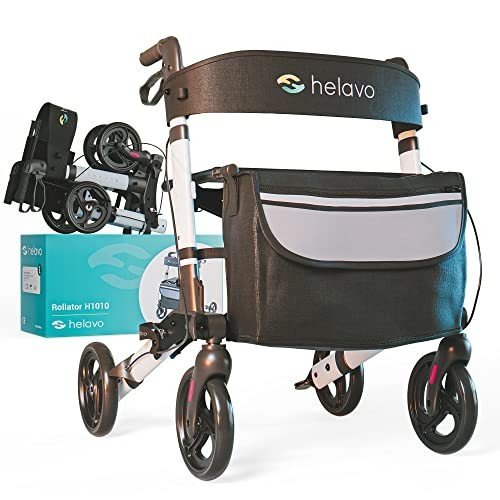As the population ages, the demand for mobility aids continues to grow. Among the most popular options for those seeking increased self-reliance and safety while browsing their surroundings is the sturdy rollator. These mobility aids provide essential support, enabling users to walk with greater self-confidence and stability. In this article, we will dig into what a Sturdy Rollator (Dubai.Risqueteam.Com) is, its benefits, features to think about, tips for usage, and answers to some often asked questions relating to rollators.
A sturdy rollator is a wheeled walker equipped with a frame, handlebars, and at least three wheels, permitting users to keep balance and support while ambulating. Unlike conventional walkers, which need lifting, rollators enable users to press and assist them forward without unnecessary stress. Numerous rollators also include extra features, such as a seat for resting, a storage compartment, and brakes to make sure safety.
A sturdy rollator offers numerous advantages for people with mobility challenges. A few of the essential benefits include:
When picking a sturdy rollator, numerous key features should be considered to ensure it satisfies specific needs. Here is a list of important functions to look for:
Below is a table showcasing some popular rollator models offered on the market, highlighting their crucial functions.

| Design Name | Weight Capacity | Wheel Size | Seat Height | Foldable | Additional Features |
|---|---|---|---|---|---|
| Drive Medical Nitro | 300 pounds | 10 inches | 21.5 inches | Yes | Lightweight, big storage basket |
| Medline Premium | 350 lbs | 8 inches | 20 inches | Yes | Cushioned seat, adjustable back-rest |
| Hugo Elite Rollator | 300 lbs | 8 inches | 24 inches | Yes | Cup holder, detachable storage bag |
| Nova Vibe | 300 lbs | 8 inches | 21 inches | Yes | Stylish design, easy to maneuver |
| Drive Lightweight | 300 pounds | 8 inches | 22 inches | Yes | Ultra-lightweight, adjustable deals with |
To ensure a safe and reliable experience while using a rollator, think about the following suggestions and best practices:
A rollator may be suitable if you require support for walking, have balance concerns, or experience fatigue while standing. It's best to talk to a healthcare expert to examine your specific requirements.
Yes, numerous rollators are designed for both indoor and outdoor use. Look for designs with larger wheels and sturdy frames for outdoor surface.
Frequently check the brakes, tighten loose screws, and tidy the wheels and frame. Following the manufacturer's standards for maintenance will help ensure longevity.
Yes! While rollators mostly help with mobility, they can also be used for gentle exercises, such as walking practice, leg raises, and balance exercises. Seek advice from a physical therapist for tailored workouts.
Yes, alternatives include basic walkers, canes, and mobility scooters. The best alternative depends upon private needs, choices, and mobility levels.
For many people, a sturdy rollator can considerably improve mobility, offer a sense of self-reliance, and assist in an active lifestyle. By comprehending the benefits, functions, and correct usage of rollators, users can make informed decisions and improve their quality of life. With the right rollator and suitable use, people can navigate their environments with confidence and securely.
No Data Found!
